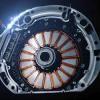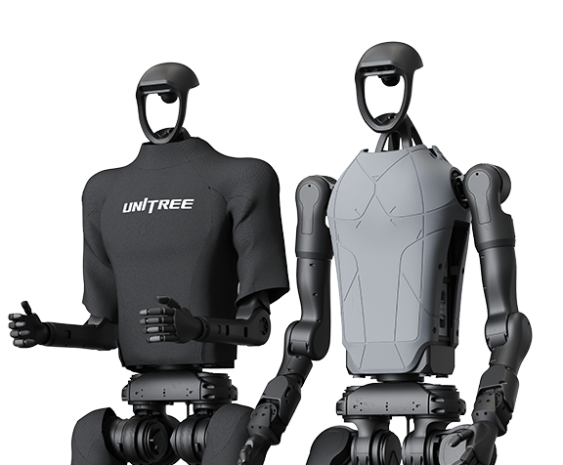
Breaking News
 Panicked Biden Aide Neera Tanden Now Claims "Every Time" She Used Autopen...
Panicked Biden Aide Neera Tanden Now Claims "Every Time" She Used Autopen...
 #563: Losing Our Rights In The Palantir World Order | Jason Bassler
#563: Losing Our Rights In The Palantir World Order | Jason Bassler
 Dave Smith vs Alex Berenson On Israel Tonight, Live
Dave Smith vs Alex Berenson On Israel Tonight, Live
 Virginia Giuffre's Family Outraged by Ghislaine Maxwell's Transfer...
Virginia Giuffre's Family Outraged by Ghislaine Maxwell's Transfer...
Top Tech News
 The mitochondria are more than just the "powerhouse of the cell" – they initiate immune...
The mitochondria are more than just the "powerhouse of the cell" – they initiate immune...
 Historic Aviation Engine Advance to Unlock Hypersonic Mach 10 Planes
Historic Aviation Engine Advance to Unlock Hypersonic Mach 10 Planes
 OpenAI CEO Sam Altman Pitches Eyeball-Scanning World ID to Bankers
OpenAI CEO Sam Altman Pitches Eyeball-Scanning World ID to Bankers
 New 3D-printed titanium alloy is stronger and cheaper than ever before
New 3D-printed titanium alloy is stronger and cheaper than ever before
 What is Unitree's new $6,000 humanoid robot good for?
What is Unitree's new $6,000 humanoid robot good for?
 "No CGI, No AI, Pure Engineering": Watch Raw Footage Of 'Star Wars'-Style Speeder
"No CGI, No AI, Pure Engineering": Watch Raw Footage Of 'Star Wars'-Style Speeder
 NASA's X-59 'quiet' supersonic jet rolls out for its 1st test drive (video)
NASA's X-59 'quiet' supersonic jet rolls out for its 1st test drive (video)
 Hypersonic SABRE engine reignited in Invictus Mach 5 spaceplane
Hypersonic SABRE engine reignited in Invictus Mach 5 spaceplane
 "World's most power dense" electric motor obliterates the field
"World's most power dense" electric motor obliterates the field
 The Wearables Trap: How the Government Plans to Monitor, Score, and Control You
The Wearables Trap: How the Government Plans to Monitor, Score, and Control You
What is Unitree's new $6,000 humanoid robot good for?

The R1 measures just below 4 ft (1,210 mm) in height, weighs about 55 lb (25 kg), and has a total of 26 joints. It's good for about an hour of activity on a single charge of its internal battery, supports Wi-Fi and Bluetooth, and of course, features a camera, mics, and speakers for communication.
With all those joints and a relatively low weight, this humanoid is plenty flexible. You can see what appears to be a visualization of its athletic capabilities below (it might be actual footage, but I just can't be sure and we've written to ask).
While the movements above are indeed impressive, it's worth noting the R1 is missing a couple of key things: hands. Unlike Unitree's more advanced humanoids, the R1 doesn't have dexterous mitts that can grip and manipulate objects.
Between the lack of paws, the relatively low battery life, and its short height, the R1 isn't going to be very useful out of the box. Don't expect to power it on and immediately have it do your laundry and dishes, and take out the trash. What it is good for right now, though, is research and education.
By that I mean that scientists are using it to test what they can train robots to do with their algorithms and AI models, and also testing the capabilities and reliability of these robots as they're programmed to perform various tasks in industrial settings. For example, automaker Geely is trialing a Unitree robot on its assembly line to see how it can assist with vehicle production.
Whichever way you slice it, it's still amazing that you can buy a functioning humanoid robot with these specs at this price already.
For reference, Unitree's general-purpose H1 robot that can climb stairs and do backflips costs $90,000, while the lower-end G1 comes in at $16,000. Tesla's hotly anticipated Optimus is expected to land somewhere between $20,000 - $30,000. So what's remarkable here is that in this early adoption phase, the price of a humanoid robot has dropped significantly with the R1, well before a path to mainstream adoption has been established.
If you're dead serious about getting a more customizable robot, the R1 can be had in an 'EDU' version with dexterous hands, each of which cost about $5,200. That version will also cost more, thanks to the inclusion of a higher-end computing module on board.



